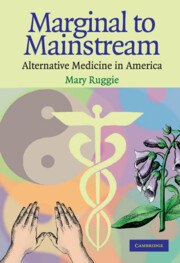Book contents
- Frontmatter
- Contents
- List of Tables
- List of Acronyms
- Preface
- 1 Introducing CAM … and the Many Questions It Raises
- 2 Understanding CAM: The Problem of Knowledge and the Power of Words
- 3 The Growth of CAM: Patterns of Use and Meaning
- 4 Physicians: Learning New Ways
- 5 Medical Research: Science and Interpretation
- 6 Investigating CAM: What Works?
- 7 The Road Ahead: Accommodation or Integration?
- Bibliography
- Index
4 - Physicians: Learning New Ways
Published online by Cambridge University Press: 05 June 2012
- Frontmatter
- Contents
- List of Tables
- List of Acronyms
- Preface
- 1 Introducing CAM … and the Many Questions It Raises
- 2 Understanding CAM: The Problem of Knowledge and the Power of Words
- 3 The Growth of CAM: Patterns of Use and Meaning
- 4 Physicians: Learning New Ways
- 5 Medical Research: Science and Interpretation
- 6 Investigating CAM: What Works?
- 7 The Road Ahead: Accommodation or Integration?
- Bibliography
- Index
Summary
As late as 1990, the AMA was still battling the incursion of unconventional practitioners in American health care. It had set up a Committee on Quackery in 1963 to condemn the practice of chiropractic and invoked Section 3 of the AMA's Principles of Medical Ethics to impede medical physicians from associating professionally with unscientific practitioners. By the 1970s, chiropractors had gained a sufficiently strong national organization to sue the AMA on antitrust grounds. The AMA began to make some concessions soon after the lawsuit was first filed in 1976 – begrudgingly, according to the U.S. Court of Appeals for the Seventh Circuit – such as permitting medical physicians to refer patients to chiropractors and officially admitting that some chiropractic treatments are not without therapeutic value. However, these concessions did not satisfy chiropractors. They finally won their lawsuit in 1987, after ten years of legal maneuvering by the AMA. There were more appeals, but the decision was upheld for the last time in 1990. Although the AMA eventually allowed that physicians could make their own judgments, it has never conceded that chiropractic services might be based on scientific standards.
The AMA has frequently used words such as “sorcery” and “voodoo” to refer to unconventional modalities (Cohen 1998, 21); in 1955, the organization was still claiming that osteopathy was a form of “cultist healing.”
- Type
- Chapter
- Information
- Marginal to MainstreamAlternative Medicine in America, pp. 75 - 100Publisher: Cambridge University PressPrint publication year: 2004

